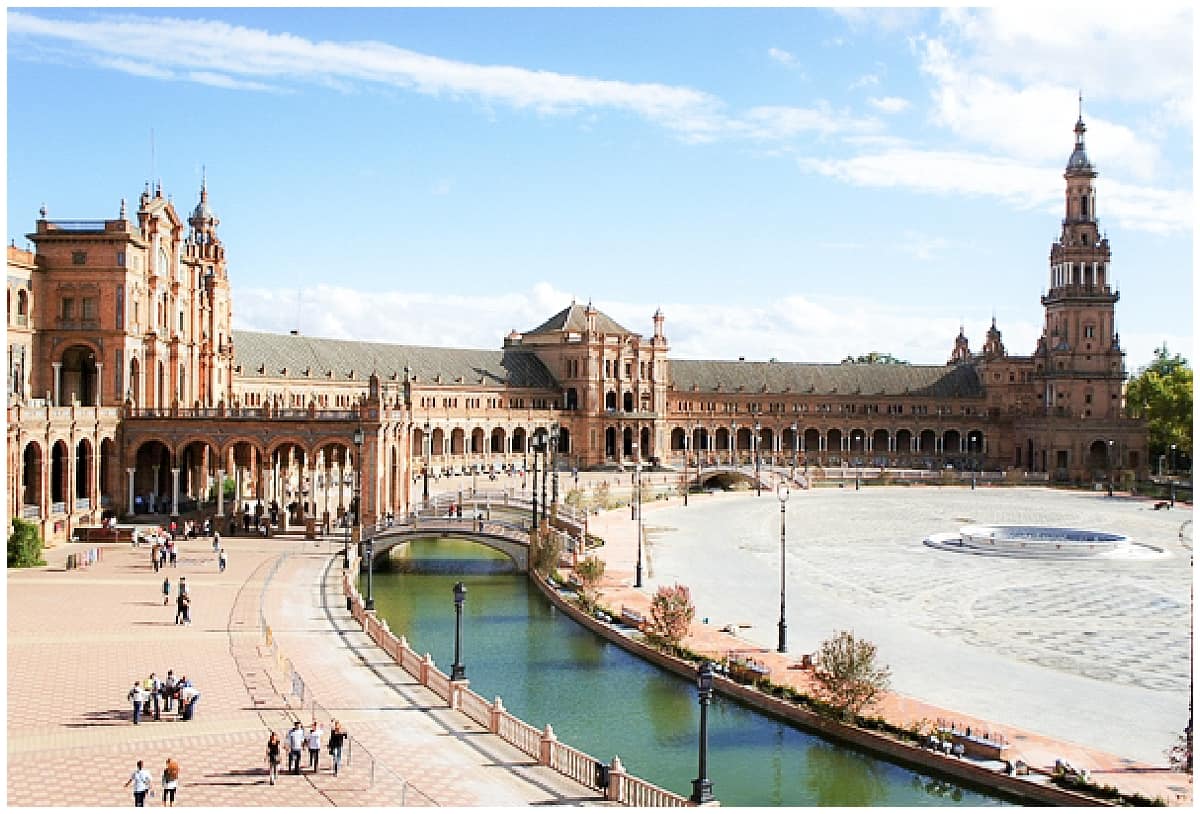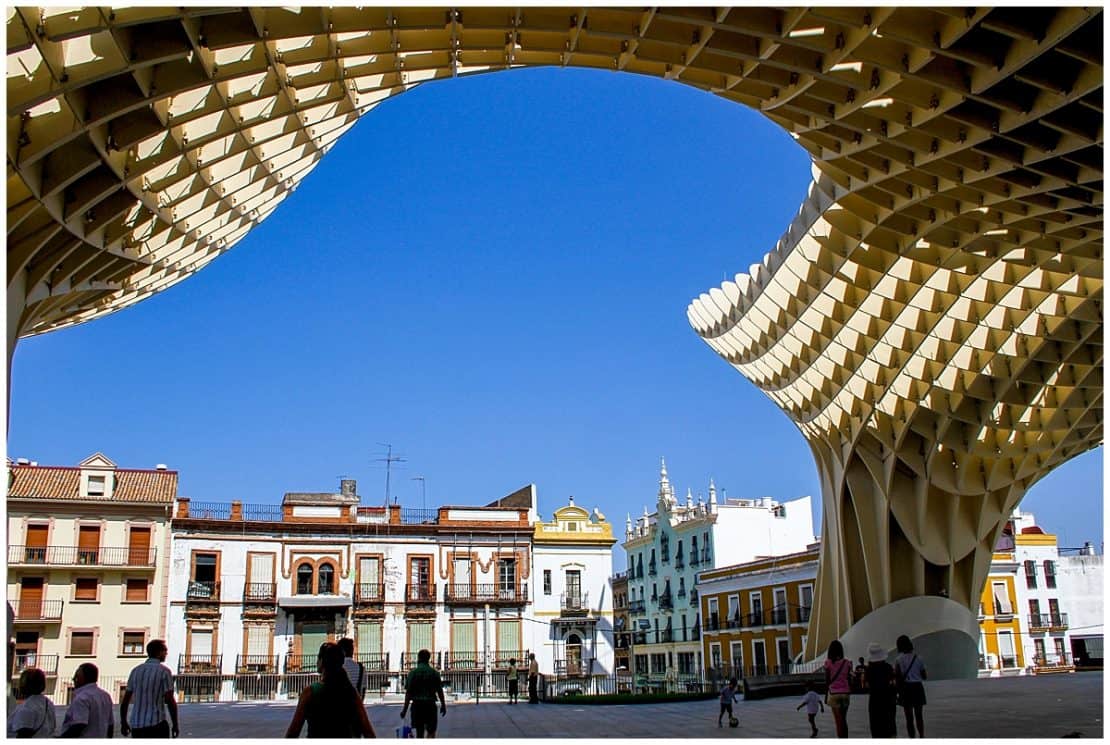An inside look at the thorny question: just how are you supposed to pronounce the word Seville?
Seville or Sevilla?
Straight up? In English, it’s Seville, as in Suh-VILLE. In Spanish, it’s suh-BEE-ya! But let’s delve a little deeper than that, shall we?
It’s a little awkward to ask. But how do you pronounce Seville? Because when you hear the locals say it, it sounds as though they’re saying an altogether different word.

Setting the Scene
As the capital of Andalusia, Seville captures so many iconic parts of Spain: vibrant flamenco performances, stunning Moorish architecture, and mouthwatering tapas.
It’s an obvious place to want to visit (check out how to incorporate into a wider southern Spain itinerary here) and, as it’s one of Spain’s largest cities, one you’ll need to talk about often.
But how exactly do you pronounce “Seville”? Is it “Suh-vill” or “Say-veel”? Well, fret not, as we’re here to demystify the pronunciation of Seville in both English and Spanish, and help you understand the differences between the two.
How to Pronounce Seville in English
Let’s start with the English pronunciation of “Seville.” Many English speakers tend to say “Suh-vill” or “See-vill,” but the correct English pronunciation is actually quite close to the Spanish way. To say it correctly, follow these steps:
- Begin with the “S” sound, just as you would in words like “sun” or “silent.”
- Next, pronounce the “ay” sound, similar to the way you’d say the letter “A.”
- Finally, finish with the “veel” part, which rhymes with “heel” or “feel.”
So, in English, Seville is pronounced like “Seh-vayl.” Don’t forget that the stress should fall on the second syllable, making it sound a bit more musical.
How to Pronounce Seville in Spanish
Now, let’s dive into the authentic Spanish pronunciation. In Spanish, Seville is called “Sevilla.” Here’s how to say it correctly:
- Start with the “Se” part, which sounds like “Say,” as in “say cheese.”
- Move on to the “vi” part, pronouncing the “v” like a soft “b” sound and the “i” like the English “ee.”
- Finish with the “lla” part, where the “ll” is pronounced as a soft “y” sound, similar to the “y” in “yellow.”
When said fluently, “Sevilla” flows smoothly off the tongue, with the emphasis on the second syllable: “Seh-vee-yah.”

The Difference Between English and Spanish Pronunciation
Now that we’ve covered both English and Spanish pronunciations, let’s highlight the key differences:
- Vowel Sounds: In English, we use an “ay” sound, whereas in Spanish, the “e” and “i” are pronounced distinctly. This gives the Spanish version its characteristic melodic quality.
- The “LL” Sound: The Spanish language has a unique “ll” sound, which is akin to the soft “y” sound in English. This sound is absent in the English pronunciation.
- Stress Placement: In English, the stress is often placed on the first syllable (Suh-vill), while in Spanish, it falls on the second syllable (Seh-vee-yah). This difference in stress placement is one of the key distinctions between the two languages.
In conclusion, whether you’re saying “Seville” in English or “Sevilla” in Spanish, it’s always good to know how to pronounce it correctly. Getting the pronunciation right not only demonstrates respect for the local culture and language but also adds a touch of authenticity to your conversations about this beautiful city.
And it stops you feeling like such a chump.
So, whether you’re planning a trip to Seville or just want to impress your Spanish-speaking friends, remember these pronunciation tips, and you’ll be saying “Sevilla” like a pro.
More About Seville
- 21 Hidden gems in Seville
- What you need to know about Holy Week in Seville
- What to do in Triana, Seville’s wild side
- No8Do in Seville: the city’s secret code
- The best tapas bars in Seville: the 15 dishes you need to try
- The best things to do in Seville
- What to buy in Seville: the souvenirs to bring home
- Where to stay in Seville: the best neighbourhoods to know
- The best food markets in Seville
More About Spain
- The ultimate Spain and Portugal itinerary planner
- Is it worth visiting Spain in winter?
- Everything you need to know about travelling solo in Spain
- How to get off the beaten track in Spain
- How to spend the perfect week in Spain
- The best road trips in Spain
- 21 Unique and unusual things to do in Spain
- 101 Questions about Spain: the Spain quiz for curious people
- 49 Interesting and Fun Facts about Spain
- How to spend a summer in Spain




